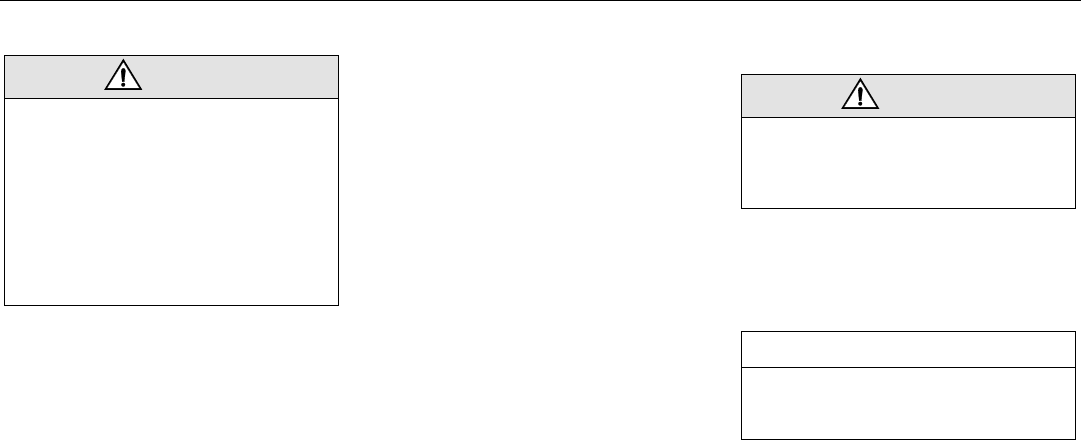
207Car care
Tire pressure
Note: Low tire pressure also causes prema-
ture tire wear and increased fuel consump-
tion.
Adjust the tire pressure to match the current
load and speed of the car (see page 245).
The stated tire pressures apply to cold tires,
i.e. tires that are the same temperature as
the outside air temperature. Tire pressure
increases as the tires become warm (e.g.
during highway driving) by approximately
0.3 bar (4 psi). When the temperature of the
tires changes by 50°F (10°C), the tire pres-
sure will change 0.1 bar (2 psi).
Never reduce the pressure of a hot tire. If the
tires are hot when you check them, only
increase the pressure, if necessary.
Soft tires will cause faster wear than over-
pressurized tires.
If a valve is leaking, simply unscrew it and fit
a new one.
Note: Remember to adjust the tire pressure
if you change the load in the car or intend to
cruise at a speed that is substantially differ-
ent from normal.
Automatic tire pressure monitoring
(option, certain variants only)
The pressure monitoring system consists of
a sensor in each wheel, a detector in each
wheel housing and a receiver. The sensors
are located inside the wheels directly adja-
cent to the air valves.
WARNING
Check the tire pressure at least once a
month and before long journeys. Under-
inflation can result in:
• punctures
• separation of the tire and tread
• damage to the sidewalls
• damage to the rims on poor roads
• poor handling characteristics.
WARNING
The system is intended to aid the driver.
The driver is always ultimately responsi-
ble for ensuring that the tire pressure is
correct.
NOTICE
Great care must be taken when changing
tires so as not to damage the sensors that
are integrated in the valves.
